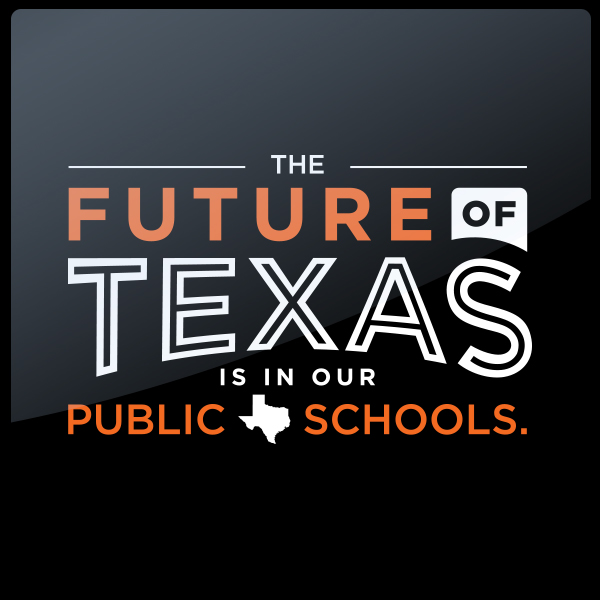
categories
Why Texas Needs to Invest More in Pre-K

August 22, 2024

A strong early childhood education creates immediate and lasting benefits for Texas’ youngest learners. Pre-Kindergarten, also known as pre-K, ensures foundational early development of 3- and 4-year-olds which, as studies show, significantly improves third-grade reading and math outcomes, high school graduation rates, and college attendance, especially for at-risk students.
Through bipartisan support, in 2019 the Texas Legislature passed HB 3. Recognizing all of the benefits of early childhood education, the bill established the Early Education Allotment to support K-3 learning goals, and required school districts to offer full-day pre-K – but the mandate did not come with full-day funding for pre-K. Although the Early Education Allotment and additional state and federal funds currently fund pre-K programs, these programs don’t cover the full cost of pre-K in Texas, leaving school districts to find the funds to fully fund their state-mandated full-day programs.
The bill also did not give all of Texas’ young learners access to pre-K. Texas’ current pre-K eligibility requirements leave many children out. To qualify for free pre-K, children must meet at least one of the following criteria. When it comes to income-based eligibility, families have to be within 185% of the federal poverty line, meaning that a family of four has to make under $58,000 per year to qualify. With a median family income of $86,000 in Texas, there are likely hundreds of thousands of families who are priced out of pre-K with limited options for their children elsewhere.
The Pre-K Funding Gap in Texas
In light of current school deficit budgets and staffing shortages, Texas schools must find creative ways to keep this essential program in place. “When school district budgets are tight, it is important to budget and spend money effectively,” said Max Romabado, Legislative Director at Raise Your Hand Texas. “Pre-K is an effective investment.”
“Looking back at legislation passed in 2019, HB 3 is a meaningful investment in early childhood education, but COVID-19 quickly shifted the state’s learning priorities and added new and ongoing challenges,” said Rombado. He continues that now is the time to address the pre-K funding gap in Texas.
Limited funding can also create a domino effect. As school districts struggle to hire and retain qualified staff for full-day pre-K, the lack of funding can lead to potential program cuts and limited access for eligible children.
It is also important to note that early childhood learning starts even before the age of three or four. Childcare providers across the state are serving students as young as six weeks old, investing substantial time and money in developing cognitive and social skills during a child’s most impressionable years. Childcare providers offer the dual benefit of preparing children for schooling and offering child care so that parents can work. Along with strengthening PK-3 support in public schools, lawmakers should consider investing more in childcare provider programs. Currently, the state only contributes $35 million, the bare minimum to receive federal funds, which alone are insufficient to cover the full cost of serving Texas children.
The Benefits of Pre-K
Students who go through pre-K are less likely to need remedial support or special education services which can result in substantial savings for school districts. Growing evidence suggests that every dollar spent on pre-K offers a potential return of four to nine dollars.

The National Institute for Early Education Research (NIEER) advocates for increased pre-K funding, citing its long-term benefits. Those who attend high-quality early childhood programs gain advantages in literacy, math, and social-emotional skills, setting them up for long-term success.
The Texas Education Agency (TEA) notes that children who participate in public pre-K programs demonstrate higher levels of kindergarten readiness than those who do not; 58% of pre-K attendees meet kindergarten readiness benchmarks, while only 42% of eligible children without pre-K experience are considered ready. TEA also reports that high-quality pre-K programs have lasting benefits for students, including a 2% decrease in dropout rates, a 6% increase in on-time high school graduation, a 7% increase in college enrollment, and a 6% increase in completing a second year of college.
Additionally, a study by Texas A&M University researchers found Texas could potentially gain $3.50 for every dollar invested in pre-K due to reduced costs in areas like education, crime, and social programs.
Texas Compared to Other States
In recent years, Texas has made significant efforts to expand access to pre-kindergarten. However, compared to models in other states, Texas’ program still falls short. Texas currently ranks 34th in the nation for pre-K spending, falling more than $3,00 per student below the national average. Texas falls behind compared with states such as Oklahoma and Georgia which offer statewide fully funded, full-day pre-K programs.
Oklahoma stands out for its universal access, funding over $4,798 per child, and maintaining high-quality standards. Georgia boasts a high enrollment rate of 56%, funding $5,646 per student, and their program is credited with boosting foundational literacy skills. Both states require degrees and specialized training from their teachers while maintaining relatively small classes and low student-to-teacher ratios.
States like Oklahoma and Georgia have demonstrated the positive impact of investing in full-day, high-quality pre-K programs. Texas has an opportunity to follow suit by increasing funding and expanding access to ensure all children begin their educational journey with a head start.
Texas also has the opportunity to further legislation that supports high-quality pre-K programs. Today, Texas only meets four of the 10 NIEER quality standards for preschool, which are: 1) early learning standards; 2) teacher degree requirements; 3) specialized training for early learning; and 4) health screening and referrals for children. Among other missed benchmarks, Texas does not require a one-to-11 teacher-student ratio, a class size limit of 20 students, degree-holding assistant teachers, or a quality improvement system.
Investing in Our Youngest Learners
Right now, Texas has a general revenue surplus of nearly $20 billion, providing an unprecedented opportunity to invest in early learning. While no one can predict how the 89th Legislative Session will unfold, investing in early childhood education is crucial.
During the 89th Legislative Session, lawmakers should fund pre-K on a full-day basis and expand access, allowing ISDs to redirect local and Early Education Allotment funds to other crucial supports.
By modernizing Texas’ pre-K funding to support full-day programs and expand access, Texas can prepare its youngest learners for future success.




